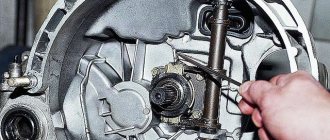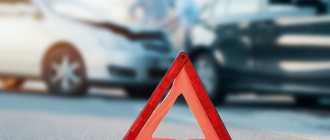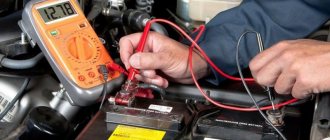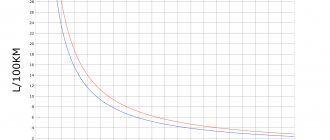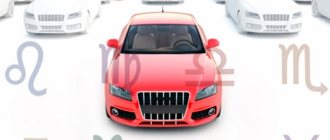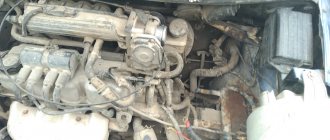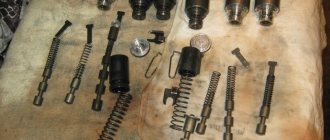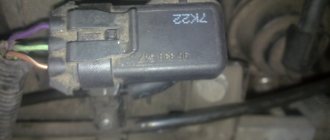First, the car may stall, and you will receive verbal and visual negative reactions from the drivers behind you, especially if the traffic at the intersection is quite busy. Even the treasured letter “U”, glued ahead of time on the rear window, will not save you. Secondly, you can get completely confused and make an unexpected rollback, injuring the cars driving behind you.
Thirdly, in the case of insufficient braking, for example, at a red light at a traffic light, there is the possibility of entering the territory of a pedestrian crossing, which is strictly prohibited by traffic rules, and is fraught with an unexpected collision with a pedestrian.
The theoretical part, or how the brake system works
The braking system begins with the brake pedal. The brake pedal presses on a rod (small rod) that passes through the brake booster. The booster works in such a way that if you press 1 kilogram on the pedal, 4 kilograms already hit the brake system behind the booster. The numbers are taken from the air, just to give an idea of the degree of gain. Next to the brake booster is the brake master cylinder (MBC), which acts as a brake force distributor across the circuits (so that equal pressure enters each circuit). The GTZ is filled with brake fluid, which enters it from the expansion tank, which is usually located “at the top”.
When we press the brake pedal, the inlet holes are blocked by the pistons and the brake fluid can only flow towards the brake mechanisms. Connected to the master cylinder are brake lines that transmit brake fluid pressure to the brake mechanisms on the wheels, called brake calipers, brake actuators, or brake wheel cylinders. These cylinders put pressure on the brake pads, causing the car to brake.
The scheme of work has been slightly simplified, some nodes have been removed from it, but the essence does not change.
Separately, it is worth mentioning about the braking force booster. It can be made with an energy accumulator (that is, to accumulate vacuum or brake fluid under pressure) and without it. It depends on this whether the car will brake just as quickly when the engine stalls or not. Another point is how the brakes are strengthened. They can be strengthened either by vacuum or hydraulics. The brake systems themselves can be hydraulic (with brake fluid inside) or pneumatic (controlled by air pressure, but I have only seen this on trucks).
How to avoid burning out the clutch on a car
A burned clutch is a common technical problem faced by inexperienced drivers.
A burned clutch is a very common technical problem that inexperienced drivers have to deal with. This usually happens when the flywheel rotation speed is too high when the driven disk is mated. As a result, contact is impossible due to increased speed, as a result of which the surfaces instantly overheat and lose their properties.
When the car begins to roll back, it is important to understand that the problem is not so much in the gas pedal being pressed poorly, but rather in the clutch not being released enough. As a result, the newcomer presses on the gas by mistake, the engine literally bursts from unrealized power, after which the clutch pedal is released, and this causes the unit to burn
Braking to a complete stop on a straight line
Perhaps the simplest discipline. We press the brake pedal, and when the speed value begins to approach the idle speed mark, we depress the clutch pedal and... And it all depends on speed. Or we shift to a lower gear if we stop from high speed, or we go into neutral.
Many people teach you to immediately get into neutral and roll while pressing the brake, but this is wrong. It’s not for nothing that I cited the theory at the beginning. This is all due to the brake booster, which only works when the engine is spinning and is somewhat more effective at speeds above idle.
Just imagine the situation: at the moment of braking, the engine stalls, and you are rolling in neutral. The brakes will become dull, and the braking distance will increase several times, which is fraught with a “catch-up” type accident and other troubles. That’s why we always brake in gear and nothing else!
This method of braking will add additional amenities when the anti-lock braking system is operating, that is, when you brake on ice. If the ABS has released the drive wheel, then when driving in neutral, the wheel will completely stop braking for a moment, and if you brake in gear, then there will simply be a transition from brake braking to engine braking, which will not reduce braking efficiency as much as braking in neutral.
Conclusions.
Engine braking is a very effective way to prevent your car from skidding on wet or slippery sections of the road. However, despite this, such braking must be performed correctly so as not to cause harm to the car, including damage to synchronizer parts. And the main recommendation is that in order to apply such braking on roads, you should accurately work out the actions performed to reproduce it.
Study properly how the car begins to behave under such braking, what the braking distance is, and practice this method at the test site. And only after firm confidence in your skills, try to use it on real road sections. It is this approach to this issue that will help you apply engine braking correctly, effectively and safely.
Video
Braking in a corner
This is where you need to be careful, because in the absence of ABS and when the wheels are locked, the car will fly straight, that is, it will not obey the steering wheel. If you have ABS, the situation is a little better, but still the controllability is not as clear as when steering without brakes, so be especially careful, or better yet, try to brake in advance so that you already have the correct speed when turning or maneuvering.
Another danger of braking during a turn is skidding and spinning. If for some reason the rear wheels are blocked (for example, the rear is on ice, and the front is already on the asphalt), the rear of the car will begin to overtake the front, which leads to a skid or a U-turn.
In general, when turning, the speed should already be correct, and if you need to brake, then smoothly and very carefully.
Engine braking
Many auto websites write that this is how you should brake on ice. Don't listen to them! There is no general rule, and engine braking itself is not always good. For example, on my front-wheel drive car, I use downshift and engine braking if I need to make a slight skid and don’t want to use the handbrake.
The thing is that when you press the brake, both the rear and front wheels brake. The front ones brake for braking efficiency, and the rear ones to prevent early skidding. If only the rear brakes, or only the front ones, brake, this can lead to skidding. Therefore, engine braking in its pure form should not be used if you are not a fan of extreme driving. Braking while in gear, even on ice, provides more effective braking than simply engine braking or brake braking.
Now about the engine braking technique. Take your foot off the gas and you're done) I'm serious. If the braking efficiency is not enough and the speed allows (1.5-2 thousand less than the maximum), you can switch to a lower one. When switching to a lower gear, it is advisable to shift the throttle, that is, raise the speed and release the clutch pedal smoothly. If you do not re-gear, you can damage the transmission, engine, or get a long-awaited skid (well, what do you want when you suddenly drop the clutch when shifting to a lower gear). The lower the gear, the more effective the engine braking, and the greater the likelihood of catching a skid.
Engine braking on front-wheel drive when cornering on a porridge results in a turn in 80% of cases. On gravel and at high speed, in 70% of cases there will be a turn if the drive is front-wheel drive and engine braking is too effective. It’s better not to play around and understand where the turning limit is, and to train only in a place that is safe for you, those around you and your car. And never use techniques that you have never done before.
Movement in gear and fuel consumption
While the car is moving in gear, fuel is consumed in increased quantities. Keeping your foot on the gas pedal and high engine speeds requires fuel consumption. Removing pressure on the gas pedal causes the car to stop from engine braking, and the lower the gear, the faster the car stops. When descending a slight slope, the optimal gear lever position is neutral, which prevents engine braking. In such a situation, the speed of the car drops much more slowly than in gear, since the car is slowed down only by the friction force of the wheels on the road surface and air resistance. This saves fuel significantly.
Let your car rock as it approaches intersections, intersections, and before stopping! Try speeding up and, if necessary, deliberately braking, "turn the lights green" to stay as far away as possible. This will certainly get you through the known traffic light phases of your "home route".
When starting at an intersection, proceed as follows: Start quickly to make optimal use of the green phase and build more distance ahead when you start. Hold traction, no fuel is introduced! When fuel cutoff is used in all modern cars, the engine does not receive any fuel when you release the accelerator pedal. In this way, rolling phases on flat and entire mountain descents can be consumed without fuel and exhaust gases with an engine braking effect - until you disengage.
The method allows, with an engine size of 1.4-1.6, to cover 12-15 km on one liter of fuel in the city without congestion. And some drivers manage to drive even 20 km on one liter. But there are situations when it is not possible to brake economically due to road conditions. Then the ability to brake using the engine is more useful than ever.
Emergency braking
On a straight line it's just a brake to the floor and that's it. The clutch is depressed only when the engine reaches low speeds and not before, and if you have time to change gears, this can help you out, for example, when there was a danger in front, but it disappeared but a danger appeared on the side.
Just don’t forget that there may be cars behind you, and if the situation allows, first do a preemptive braking for half a second so that the driver behind you understands that there will be an emergency braking, then release the brake for a moment and brake all the way. As soon as the need to urgently brake has passed, and the car is still moving, release the brake to give the rear one a chance to slow down and not “catch up” with you.
When turning, everything is more difficult. On asphalt and at moderate speeds, the likelihood of skidding is not great, but in winter, when braking in a corner, you can easily be left without a car. To reduce the likelihood of skidding, it is necessary to turn movement along an arc into a set of straight segments, and the arc itself (the trajectory of the car) will be similar to a polyhedron inscribed in a traffic lane. In this case, we brake only on straight sections, and by releasing the brake we correct the trajectory of the car so that it does not go beyond the lane or road.
You can, of course, brake urgently until a stall occurs, and when it occurs, release the brake and correct the car, but in practice this is extremely difficult to learn. By the term release the brake, in this case I mean slightly release the pedal and reduce the effectiveness of the braking, and not completely release it.
Always keep your car under control
I'll put this in a separate paragraph. A car is more vulnerable when it lacks the ability to steer, brake and accelerate. If at least one of these functions has reduced its effectiveness, the car becomes vulnerable. Braking efficiency decreases depending on the surface or if the brake system fails. Acceleration efficiency decreases when the gear is incorrectly selected, and even more so when driving in neutral. Many side impacts and skids could have been avoided if the correct gear had been engaged. Steering efficiency is reduced when the wheels are locked, when driving on gravel, ice, or when the steering wheels are turned too far.
The solution is simple:
- The gear should be engaged as often as possible and allow the vehicle to be pulled out.
- The higher the speed, the less steering movement you can afford. Either slow down or slow down again.
- On ice and gravel, the speed from the rule above should be several times lower, since the wheel stall threshold is much earlier.
These were the basics of proper manual braking. In any case, practice before putting this knowledge into practice. Good luck on your journey.
WE RECOMMEND ALSO READ:
Why is it necessary to know how to brake manually?
It is no secret that driving safely means being able, if necessary, to perform a maneuver that allows you to avoid a traffic accident. That means:
- Ability to change direction of movement using steering control.
- Perform braking:
- working brake system;
- engine (with the gas pedal released).
- Accelerate, if necessary, by pressing the gas pedal.
Proper manual braking means staying in gear until the stop is completed. Coasting should be completely excluded from everyday driving.
What might motivate people to act this way? Habit largely determines whether a person will become a safe, competent driver or a dangerous driver. A good driver obeys every traffic law and rule of the road. This is not the case for most motorists on our roads. They are always late, rush to get ahead of others, and some, especially minibus drivers, follow the green light, make a left turn with the green light only to have the U-turn and left turn again cross the intersection in front of others on Housestritch and Vlissengen, or on Krus- street and in the camp.
